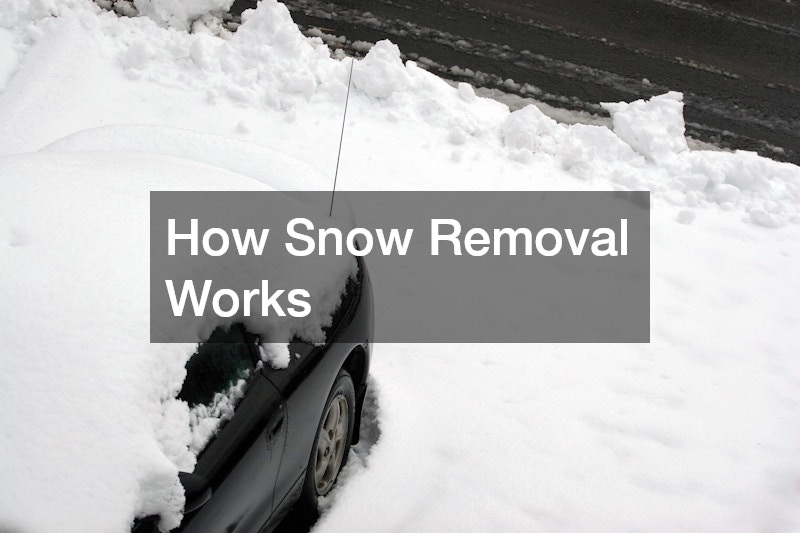
As winter approaches, many regions brace themselves for the inevitable snowstorms that will turn roads and pathways into slippery hazards. Snow removal becomes a crucial task to ensure safety, accessibility, and the normal functioning of daily activities. While the amount of snow may differ from place to place, the basic methods of snow removal are strikingly similar. This article will explore the mechanisms of snow removal, focusing on strategies, equipment, and the efforts involved in locales such as Marysville, WA, where snow can have a significant impact on mobility.
Forecast and Preparation
Snow removal typically begins with a forecast and preparation. Municipal governments and private contractors watch the weather closely to predict the severity of the snowfall and prepare the necessary resources. The preparation phase involves ensuring that snowplows, trucks, and other machinery are well-maintained and ready for action. In areas like Marysville, WA, where snowfalls can be heavy, strategic planning is crucial. Salt, sand, and other de-icing materials are stocked in advance to melt ice and improve traction on roads and sidewalks.
Team Are Mobilized
When snow starts to fall, snow removal teams are mobilized promptly. The primary focus during the initial phase of snow removal is on major roads and highways to ensure that emergency services and essential travel can continue with minimal disruption. Snowplows are deployed to clear the primary routes first, allowing traffic to flow and preventing accidents caused by snow accumulation. Despite the urgency, careful consideration is given to environmental impacts, as excessive use of salt can harm local ecosystems.
Major Roads Are Cleared
Once the major roads are clear, the attention shifts to residential streets and local routes. This phase requires a different approach compared to primary roads. Smaller plows and equipment like snow blowers are often utilized to navigate the narrower streets of suburban areas. In Marysville, WA, community involvement is sometimes necessary, with residents helping to clear sidewalks and driveways in front of their homes. Collaboration between the city and its residents ensures efficient snow removal and safer neighborhood passageways.
Technology and Equipment
Technology plays an increasing role in the snow removal process. Modern snowplows are equipped with advanced GPS systems and sensors that provide real-time data on snow and ice conditions. These technologies help optimize route efficiency and reduce fuel consumption during operations. Furthermore, smartphone apps and websites offer live updates and alerts about snow removal status, helping residents plan their activities around ongoing operations. In Marysville, WA, leveraging technology has become increasingly important to manage resources effectively and keep the community informed.
Community Involvement
Snow removal isn’t solely the responsibility of municipalities and private contractors. Community involvement often plays a pivotal role in maintaining accessibility and safety during heavy snowfalls. In towns like Marysville, WA, local residents and businesses frequently come together to contribute to the snow removal efforts. Many neighborhoods organize volunteer teams to shovel sidewalks, clear driveways, and assist elderly or disabled residents with their snow-related needs. This grassroots collaboration not only speeds up the snow removal process but also fosters a sense of unity and shared responsibility among community members. In some cases, local businesses even provide equipment or sponsor de-icing materials to support these efforts.
Planning for Expenses
Cost is another significant aspect of snow removal. Municipalities like Marysville have to budget carefully each year based on historical snow data and forecasts to allocate sufficient funds for these operations. The expense involves not only the labor costs for the personnel but also the maintenance of the equipment and procurement of de-icing materials. In some instances, unexpected weather patterns can lead to increased spending, necessitating additional funding. However, the safety and accessibility ensured through efficient snow removal often justify the expenditure.
Snow removal is a complex and essential process critical for maintaining public safety and accessibility during the winter months. From preparation to execution, each phase requires coordination, strategic planning, and community involvement. In regions such as Marysville, WA, where snowfall can extensively impact day-to-day life, efficient snow removal strategies are not merely a convenience but a necessity. Through the use of modern technology and collaborative efforts, snow removal operations continue to evolve, ensuring safer and more efficient practices every winter season. Whether it’s a small town or a bustling city, the importance of snow removal remains universally understood and appreciated.
.




